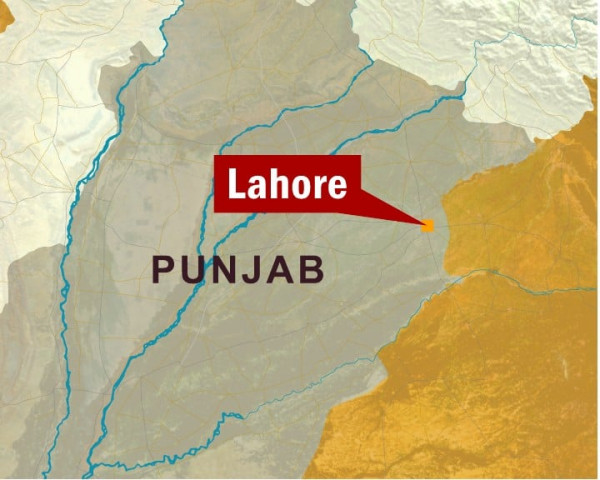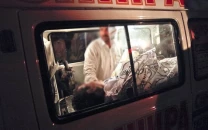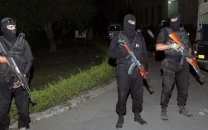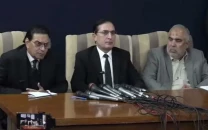Environmentalists condemn Muslim Town flyover project
EIA report ‘is not meant to go against govt’, say officials.

Environmental impact assessment reports, which are meant to look at the effects of mooted development projects on the environment, have become a rubber-stamp formality, as illustrated by the EIA report issued for the flyover to be built on Ferozepur Road at the Canal and Muslim Town, according to environmentalists and some officials.
Under the law, the government must conduct an environmental impact assessment (EIA) before it can start any development project costing over Rs50 million. But there is little serious effort made to find negative effects of projects.
For example, said an officer of the Environment Protection Department on the condition of anonymity, one element of an EIA is a public hearing where citizens can raise their concerns about a project. In this case, the hearing was held 10 days after the flyover project was started on September 20.
The hearing was advertised once, a month earlier in an Urdu daily, he said. “They were far more keen to advertise the fact that a hearing had been held. Banners hailing the public hearing went up a day after the hearing,” said the official.
Another source in the EPD said that less than 20 people attended the hearing, most of them Muslim Town residents who objected to the project’s duration and the level of dust and noise pollution.
When the Punjab government decided to build a flyover at Kalma Chowk, work was started even before an EIA was conducted. A report was eventually compiled on the Lahore High Court’s orders after it was petitioned by environmentalist groups.
For the latest flyover project, the EIA report was released a month before the public hearing. Environmentalists say that just like the EIA report for the Kalma Chowk project, it lacks any serious research and is riddled with omissions.
The EPD official said: “There were no interviews of stakeholders such as shop owners and residents. The methods proposed to minimise the project’s impact on the environment are inadequate,” he said.
He said serious alternatives to the flyover, such as greater public transport, are not assessed in the report. “Only private motorists will benefit from flyovers. The traffic congestion is not the government’s concern. It’s only to please the rich,” he said.
The EIA states that no land need be acquired for the flyover’s construction, though the Communications and Works Department says it has acquired six kanals for the project.
Another EPD officer involved with the EIA report, also speaking on the condition of anonymity, admitted that EIAs were “not meant to go against the government”. In response to accusations that the EIA is pretty much the same as the one for the Kalma Chowk flyover, he said: “We didn’t need to do more work for the report as it is the same environment.”
Environmental activists said that the construction of flyovers was a wasteful use of scarce resources. “We need public transport, not overpasses that benefit car-drivers alone and which require huge allocations of limited resources,” said Rafay Alam, a lawyer and green activist.
“Unfortunately, most people seem to believe progress lies in getting more cars on the road. Flyovers and such projects are interpreted as signs of development when that is not the case,” said Kamil Khan Mumtaz of the Lahore Bachao Tehreek.
Alam agreed, saying the project was “symptomatic of an unsustainable development paradigm that pervades the corridors of power”.
Mumtaz said the government was encouraging people to buy cars when the country was short of electricity, gas and petrol.
Both said that the flyovers would hurt plans for a mass transit project. “This flyover, along with the Kalma Chowk flyover, will spell the death of the Rapid Mass Transit Project. The two cannot exist together,” said Alam.
Project Director Sabir Khan said the flyovers did not pose a considerable hazard to the environment. “The construction area has been confined within metal walls, which prevents machine noise from reaching residents of the area,” he said. “We also sprinkle water to settle the dust.”
His only concern was the chief minister’s demand that the bridges be finished by March 23. “This project is three times bigger than the Kalma Chowk flyover. It could easily take up to 18 months,” he said.
Mazhar Kamal Khan, who is director (traffic) at the Traffic Engineering and Planning Authority, said though public transport would have greater long-term benefits, the flyover should be built as a short-term fix to traffic congestion. He said that the rate of new cars getting on the road had remained steady for three years. He said that CCTV cameras would be installed in more places to improve traffic management.
A Johar Town resident, who had served on a committee that recently made recommendations concerning the widening of Canal Bank Road on the directions of the Lahore High Court, said that the start of work on both projects simultaneously had created massive traffic problems. He said it sometimes took him three hours to get to his office on The Mall.
Naveed, a Muslim Town resident working in a bank in DHA, also complained about the length of alternative routes while construction work is ongoing. He said that building flyovers would actually lead to more traffic.
Published in The Express Tribune, October 23rd, 2011.



















COMMENTS
Comments are moderated and generally will be posted if they are on-topic and not abusive.
For more information, please see our Comments FAQ